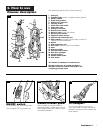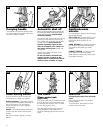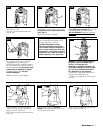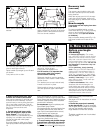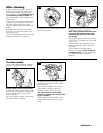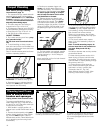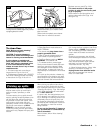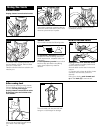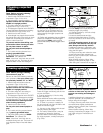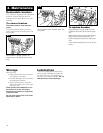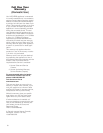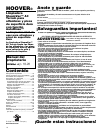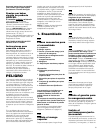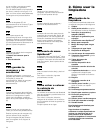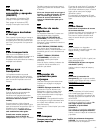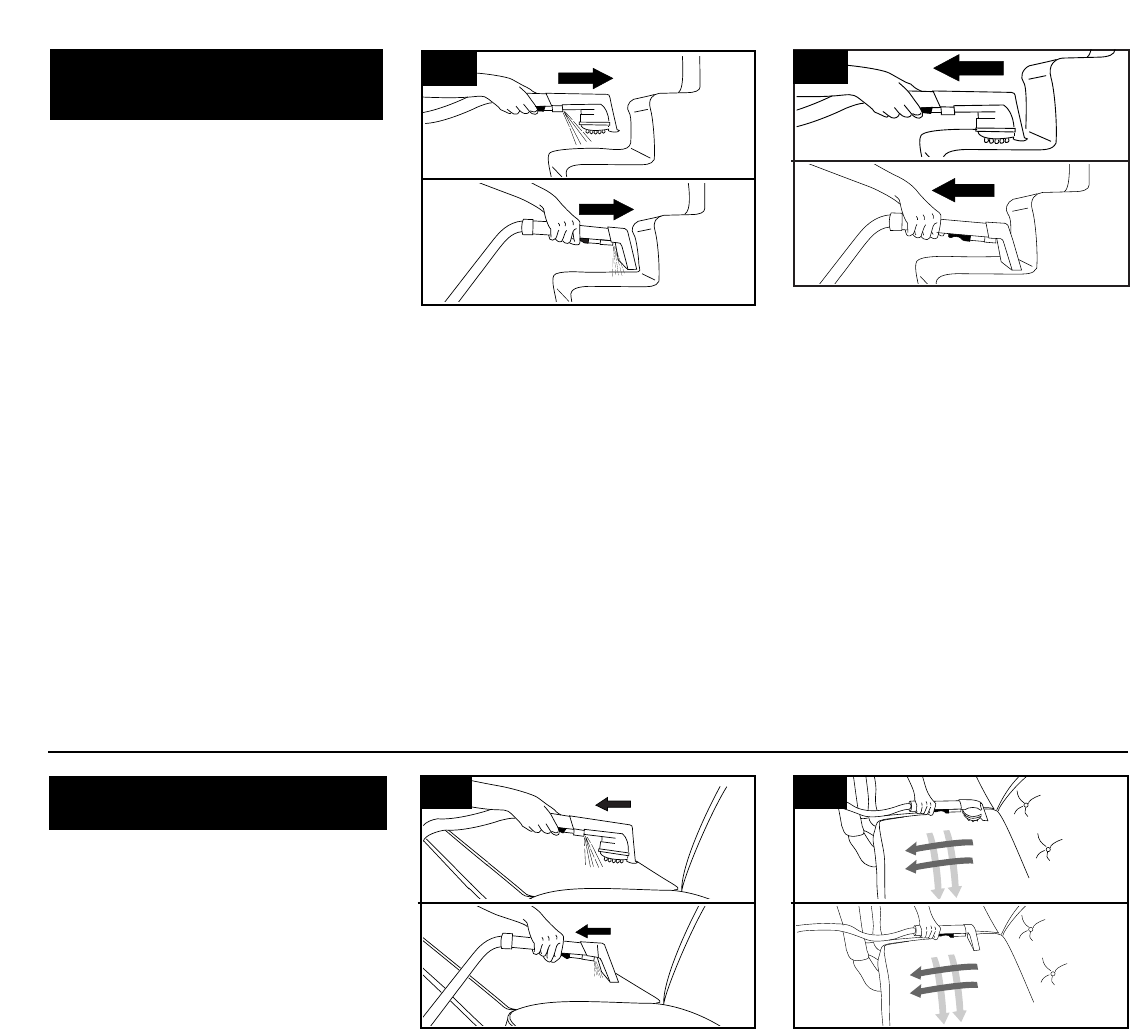
3-22
A
B
11. Lift tool, and position it against riser.
Pull tool slowly over carpet without
pressing trigger (dry stroke).
12. Overlap strokes by 1/2 inch to help
prevent streaking.
It is best to alternate wet and dry
strokes as described above. End with
more dry strokes to aid in faster drying
of carpet.
To avoid saturating carpet, do not use
more than 4 wet strokes over any one
area. Always end with dry strokes.
If additional cleaning is necessary, wait
until the carpet is completely dry before
using the tool again.
13. Empty recovery tank when the motor
sound becomes higher pitched and
there is a loss in suction (see “Automatic
shut-off”, Fig. 2-6).
When finished cleaning, follow “After
cleaning” instructions on page 11 and
“After using tool” instructions on page 14.
15
Cleaning carpeted
stairs
Read “Before you begin cleaning”
instructions on page 10.
1. Attach hose and solution tube as
instructed in Figs. 3-12 to 3-14.
2. Place handle in upright position.
Agitator brushes will not rotate while
handle is in upright position.
3. Fill clean water tank according to
instructions for Figs. 2-9 to 2-12.
4. Fill detergent container with HOOVER
Carpet/Upholstery Detergent according
to instructions for Figs 2-13 to 2-15.
5. Attach tool to end of hose.
6. Hose length may require that machine
be placed at the top of the stairs to clean
upper half of stairway and at bottom of
stairs to clean lower half.
To prevent machine from falling, use
extra caution when cleaning on stairs.
Do not place cleaner on stairs.
Do not point tools toward people or
pets.
7. Dry hands and plug cleaner into a
properly grounded outlet.
8. Set Rinse Setting switch to WASH-
AutoRinse. Turn cleaner ON.
Note: “Auto-rinse” and rinse are not avail-
able during tool use. The hose will only
dispense water mixed with detergent.
3-21
A
B
9. Pre-spray the carpeted stair by hold-
ing the tool (A) or (B) about one inch
above the carpet and push it forward
while pressing the trigger (equals one
wet stroke).
10. Position tool against the riser and slightly
press it into carpet pile. Press the trigger
and pull the tool slowly over the carpet
(second wet stroke). Release trigger at end
of stroke.
Continued
➜
3-24
Read “Before you begin cleaning”
instructions on page 10.
Be sure to check the cleaning code on
your upholstery. Use your cleaner only
on upholstery marked “W” or “W/S”.
1. Attach hose and solution tube as
instructed in Figs. 3-13 to 3-16.
2. Place handle in upright position.
Agitator brushes will not rotate while
handle is in upright position.
3. Fill clean water tank according to
instructions for Figs. 2-9 to 2-12.
4. Fill detergent container with HOOVER
Carpet/Upholstery Detergent according
to instructions for Figs. 2-13 to 2-15. Do
not use hard floor cleaning solution
when cleaning upholstery.
5. Attach tool to end of hose.
Do not point tools toward people or
pets.
6. Dry hands and plug carpet cleaner
into a properly grounded outlet.
7. Set Rinse Setting switch to WASH-
AutoRinse. Turn cleaner ON.
Note: “Auto-rinse” and rinse are not
available during tool use. The hose will
only dispense water mixed with deter-
gent.
Cleaning upholstery
3-23
8. Gently press the tool onto the fabric.
Press the trigger and slowly pull the noz-
zle over the fabric.
9. Overlap strokes by 1/2 inch to help
prevent streaking.
Make additional strokes without pressing
the trigger to remove more moisture.
10. To clean in corners or creases, lift
the tool one-half inch from the fabric and
press the solution trigger.
11. Vacuum up the solution with the tool
without pressing the trigger.
12. For heavily soiled areas, it may be
necessary to repeat the cleaning
process. Make crisscrossing strokes to
the original pattern; overlap each pass
(Fig. 3-24).
Make no more than 2 passes with the
solution or rinse over any one area to
prevent over-wetting and damage to
fabric.
If additional cleaning is necessary, wait
until the upholstery is completely dry
before using the tool again.
13. Empty recovery tank when the motor
sound becomes higher pitched and
there is a loss in suction (see “Automatic
shut-off”, Fig. 2-6).
When finished cleaning, follow “After
cleaning” instructions on pages 11 & 12
and “After using tool” instructions on
page 14.



